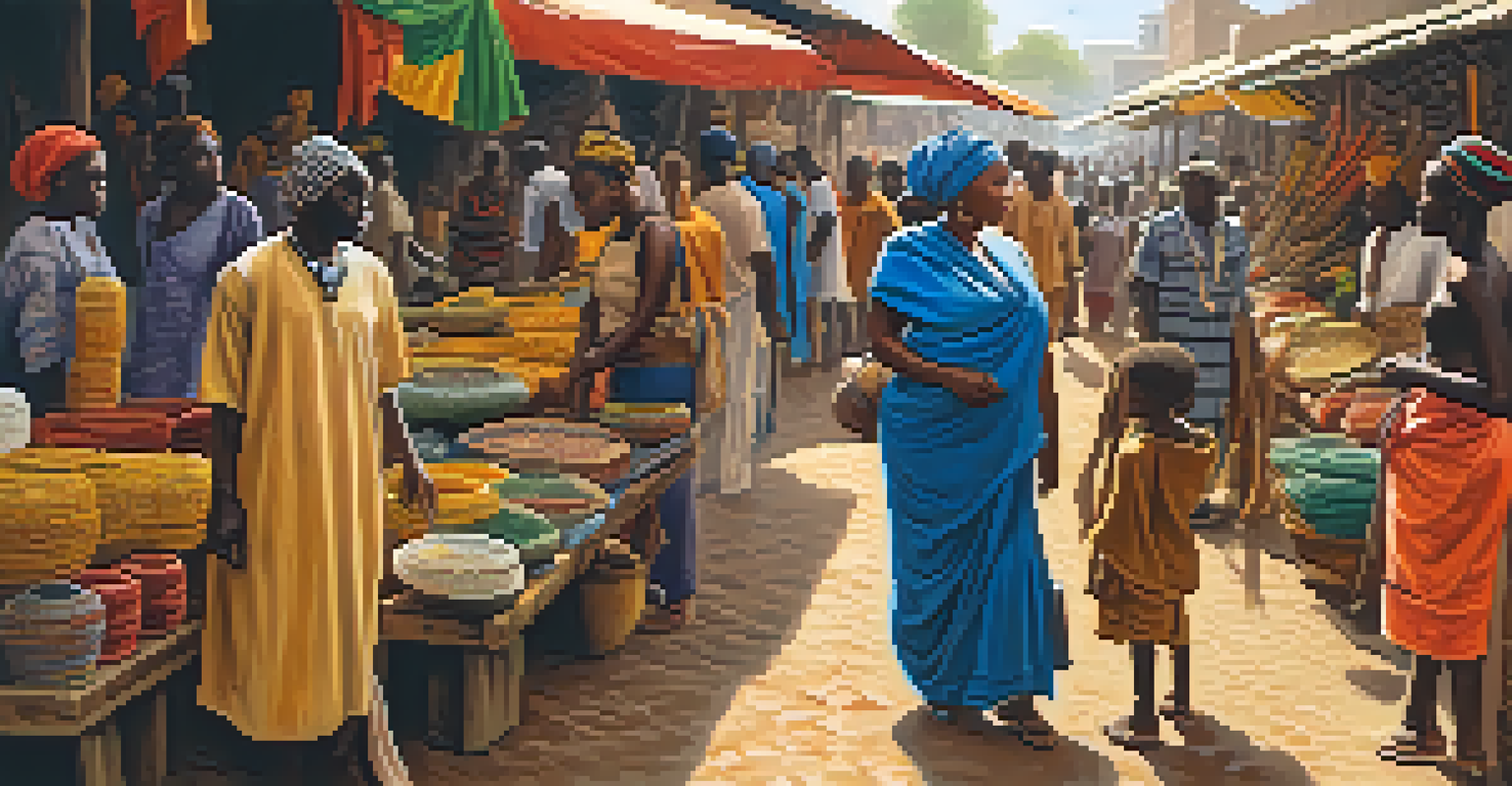Representation in Painting: A Philosophical Perspective

Understanding Representation: What Does It Mean?
Representation in painting refers to the way artists depict the world around them. It involves capturing reality, emotions, and concepts through visual means. This concept goes beyond mere imitation; it engages with how viewers perceive and interpret these depictions.
Art is not what you see, but what you make others see.
Philosophically, representation raises questions about truth and reality. Can a painting truly represent an object or feeling, or is it merely an illusion? By dissecting this notion, we can appreciate the layers of meaning that art conveys.
For instance, think of a landscape painting. It doesn’t just replicate what the artist sees; it also communicates feelings associated with that scene. This interplay between representation and perception is central to understanding art's philosophical significance.
The Role of the Artist in Representation
Artists play a crucial role in the representation process, acting as mediators between the world and the viewer. Their unique perspectives influence how subjects are interpreted, inviting us to see beyond the surface. This subjectivity can lead to varied emotional responses among viewers.

Consider how two artists might represent the same landscape. One might focus on vibrant colors to evoke joy, while another might use muted tones to express melancholy. Such choices reflect their individual philosophies and emotional states, shaping the viewer's experience.
Art as a Reflection of Reality
Representation in painting captures not just visual reality but also emotions and concepts, engaging viewers in a deeper exploration of meaning.
This highlights the idea that representation is not a straightforward reflection of reality but a complex dialogue between the artist's intent and the viewer's interpretation.
Philosophical Theories of Representation
Several philosophical theories explore the nature of representation in art. One prominent theory is realism, which posits that art should represent subjects as they are in reality. This idea can be seen in works that strive for meticulous detail and accuracy.
The painter tries to master color, and the poet language, but it is the spectator who makes the picture and the poem.
In contrast, abstract art challenges traditional notions of representation, suggesting that art can convey meaning without depicting recognizable forms. This raises intriguing questions about what constitutes representation and whether emotions can be represented without literal imagery.
These diverse theories illustrate that representation is not a one-size-fits-all concept; it evolves and adapts to different artistic movements and philosophies.
The Viewer’s Perspective: A Vital Component
The viewer’s perspective is essential in the representation process, as each person brings their own experiences and interpretations to a painting. This interaction shapes the meaning derived from the artwork, making representation a dynamic exchange.
For example, a viewer may see a portrait and connect with the subject's expression based on their personal experiences. This subjective engagement can lead to a deeper understanding of the painting's themes and emotions, enriching the overall experience.
The Artist's Influence Matters
Artists serve as mediators in representation, shaping how subjects are perceived through their unique perspectives and emotional expressions.
Thus, representation is not only about what the artist conveys but also about how the viewer perceives and interacts with the artwork.
Cultural Influences on Representation in Art
Cultural context significantly impacts how representation manifests in painting. Different cultures have unique values, aesthetics, and worldviews that influence artistic expression. This diversity enriches the art world and broadens our understanding of representation.
For instance, traditional African art often emphasizes communal values and spirituality, whereas Western art may focus on individualism and personal expression. These cultural perspectives shape the way subjects are represented and understood.
Recognizing these cultural influences helps us appreciate the richness of representation in global art forms, allowing for a more inclusive dialogue about meaning and interpretation.
Challenges in Representing Reality
Representing reality in painting comes with inherent challenges. The subjective nature of perception means that what one artist sees may differ drastically from another's interpretation. This variability can lead to debates about authenticity and truth in art.
Moreover, the advent of technology has transformed how we perceive reality, complicating representation further. Digital art and photography blur the lines between representation and reality, raising philosophical questions about what is genuine.
Viewers Shape Artistic Interpretation
The viewer's personal experiences and interpretations play a crucial role in the representation process, making art a dynamic exchange of meaning.
Navigating these challenges requires a nuanced understanding of representation and an openness to diverse interpretations, reminding us that art is as much about the journey as it is about the destination.
Conclusion: The Ongoing Conversation About Representation
The discussion surrounding representation in painting is far from over; it continues to evolve as artists and philosophers explore new ideas. Each painting invites viewers to engage in a dialogue, prompting reflections on meaning, perception, and emotion.
As we consider the various facets of representation—from the artist's role to cultural influences—we realize that art serves as a mirror reflecting our complex human experience. This ongoing conversation enriches our appreciation for the diversity of artistic expression.

Ultimately, representation in painting is a philosophical journey that encourages us to question, explore, and connect with the world around us.